-
Posts
94 -
Joined
-
Last visited
-
Days Won
1
Content Type
Profiles
Forums
Gallery
Posts posted by Tony Gill
-
-
-
Cephalopholis boenak - chocolate hind. Not the most colourful of groupers, but doesn't get all that big. Grows to a total length of about 25 cm.
-
That lower fish doesn't look a Labroides to me. It's a little hard to tell, but I suspect it's a juvenile Hologymnosus annulatus. Do an image search on that name and see if it matches up okay.
Tony
-
Looks like Halichoeres nigrescens to me.
-
I also collected them in a survey of Middleton and Elizabeth Reefs (both now within marine parks), which are just north of Lord Howe Island. In northern NSW, the species is mostly known from islands that are within marine parks. It does sometimes turn up on the coastal reefs outside of marine parks, but there are relatively few commercial collectors operating in NSW.
-
 1
1
-
-
Wah thanks Dr Gill! I did not know there are two color forms to Trachinops taeniatus.
Pic here for comparison
Normal form
Red and yellow form
Is it a locality variant? Or is it just aberrations in few individuals?
I have yet to see the red and yellow form in the trade.
I think it's just the odd individual that shows the red and yellow coloration. I've seen such individuals in the northern part of the range of the species (Byron Bay and Coffs Harbour, in northern NSW), but they have been recorded from much farther south by other people.
-
Trachinops taeniatus doesn't always handle all that well, but are usually pretty tough once they are settled in. Hopefully the ORA ones are better suited. I suspect they may try to get hold of the red and yellow form of the species. I've seen a few of them, mostly in northern NSW. They look like this: http://portstephensmarinelife.weebly.com/uploads/6/1/2/5/6125720/8772426_orig.jpg
-
Note that you can navigate around and see Heterodontus, wobbegongs, various local wrasses (Ophthalmolepis lineolatus is the main one that keeps popping up), Parma microlepis ... and more Trachinops.
-
This might be of interest to some of you - particularly the schools of Trachinops taeniatus. It's photographed immediately north of Sydney Harbour. I used to snorkel there a lot when I lived in Sydeny in the late 1980s. I see the same species where I now live, about 60 km farther north. https://www.google.com/maps/views/view/streetview/oceans/shelly-beach-sydney-australia/HQSORBv7gGwAAAQYfefWPA?gl=us&heading=356&pitch=81&fovy=75&utm_content=buffer5b57a&utm_medium=social&utm_source=twitter.com&utm_campaign=buffer#!view/streetview/oceans/shelly-beach-sydney-australia/HQSORBv7gGwAAAQYfefWPA?gl=us&heading=0&pitch=81&fovy=75&utm_content=buffer5b57a&utm_medium=social&utm_source=twitter.com&utm_campaign=buffer
-
The aurulentus is pricier because i believe they are from Coral Sea collected by Cairns Marine. They are different from the central pacific aurulentus that we used to get.
In fact i feel these coral sea "aurulentus" could likely be a new species!!
It really upsets me when the fish i have been identifying as Lubbockicthys Multisquamtus and Pseudoplesiops Rosae are actually wrong and are undescribed.
Both are common in our hobby for years and it irritates me that they are still Lubbockicthys Sp.!!
I am relieved to hear that your paper is almost done. Pls share with us here. Time to end all the confusion surrounding these Lubbockicthys Sp.!!
Sorry, but Lubbockichthys has been a challenging genus to sort out ... and it's just me doing the legwork. (That's the case for all of the pseudochromids - I've described around 1/3 of the 150 species, plus sorted out the identification of all the previously described species.) One of the main problems has been deciding which species to associate the name L. multisquamatus with. The holotype is somewhat intermediate between two species in some characters. It's interesting that you say they are both common, as that's not the case as far as museum specimens go. (I'm aware of only six specimens of one of the species.) As for the Pseudoplesiops rosae confusion - that's because aquarists and divers have depended on popular field guides rather than going to the more comprehensive treatments. I published a key to species of Pseudoplesiops in a readily available resource 15 years ago, which clarified the identity of P. rosae. In any case, I'll keep you posted on the progress of the paper. At this stage I anticipate it will come out around May next year.
-
Here some of the rare fish in my tank ^^ - all from De Jong - sorry, i am not the best photographer :-)
pseudanthias calloura - group of female:

pseudanthias aurulentus:

Pseudanthias ventralis:

Terelabrus rubrovittatus:

Rabaulichthys stigmaticus:


Lubbockichthys multisquamatus:

Pseudanthias hutomoi:

Pseudoplesiops rosae:

Hope you like them ^^
Your Pseudoplesiops rosae and Lubbockichthys multisquamatus appear to be two of my new species of Lubbockichthys. It's hard to be sure though, without seeing side-on views. I've almost completed my paper revising this genus (and am chipping away on a revision of Pseudoplesiops at the same time), and am hoping to submit it for publication later this year. Once it comes out, I might write a contribution for this group on the various species. (At this stage I'm recognising six species in Lubbockichthys, three of which are new. I'm struggling a bit with species limits in Pseudoplesiops, but there are at least 10 in that genus.)
Tony
-
 2
2
-
-
That's Manonichthys jamali, not Pseudochromis. Some of the other Manonichthys species are also mimics. For example, M. paranox is a mimic of Centropyge nox - even has the odd flicky way of swimming.
-
Just thought I'd share this: http://australianmuseum.net.au/image/Splendid-Perch-caught-off-Stanwell-Park/
Tony
-
Possibly Neovespicula depressifrons, but definitely a tetrarogid. It's not Centrogenys. Incidentally, I don't buy the mimicry story. For one thing, why mimic something that is trying to not be seen? And secondly - and more importantly - Centrogenys can deliver a mild sting itself. (I know that from first-hand experience).
-
They get very large (60 cm or so) and rather drably coloured.
-
Yes, that looks like a real Dascyllus carneus (from east Africa and the western Indian Ocean to the Chagos Archipelago). There's another species usually considered a synonym of D. carneus (with a single stripe - should be called D. nigripinnis), from the Maldives and Sri Lanka east to the west coast of Malaysia and Bali. I have a manuscript sitting around on this, just need to polish it up for publication. I agree also that the fish in question doesn't look all that healthy - distended, cloudy eyes.
Tony
-
It's been a long time since I looked at my data, but if I remember correctly there appears to be three species in the Atlantic, and at least three species in the Indo-Pacific. Most literature considers there to be only two species in the genus, a circumtropical C. maculata, and C. sufflamen in the Atlantic. I only published one paper on the genus (co-authored with Jack Randall), which showed that there is a distinct species in the north-west Indian Ocean and Red Sea (C. macrolepis). I really need to get back looking at these fishes and writing up the paper. (I also have another triggerfish paper that has been on the back burner for many years - showing that there are two species of Balistapus.) It's difficult to find time to work up these sorts of papers - particularly when I have at least 20 such papers in progress.
-
Yes, Canthidermis maculatus is the name currently applied to this species. I suspect, however, that this is actually a complex of very similar species. I commenced a study on the genus some time back, but it has been sitting on the back burner and still requires a lot of work. One day ...
Tony
-
Looks like a flame scallop to me.
Tony
-
Bifax lacinia is another brightly coloured toadfish - though far less likely to make into the aquarium trade.
-
A decade or so back, I started a study of Gramma "loreto", as it seemed there were multiple species involved. Unfortunately that study has languished on the backburner, and it seems unlikely I will be able to get back to it in the near future. In a nutshell, it seems real G. loreto (from Cuba) is a mostly yellow fish, with purple restricted to the head area. Aside from coloration, there are scale count and some morphometric differences between that form and the one more usually identified as G. loreto.
Tony
-
Threw in the "biological" filtration. These are Perna viridis, the Asian green lipped mussel. They do amazing things for water clarity, but can be a pain when they spawn and clog your pipes/hoses. I've found a solution to that though... More in later pictures.
This is just an egg from a sunbird nest that was built in the tank. I guess the parents thought it looked like a safe place? Anyway, ACRES came and moved the nest.
And this is a cardinal of some sort that came in with the bycatch. Can someone ID it?
Oh yeah, tanks 3 and 2 are getting built while tank 4 fills up.
Your "cardinal" is a type of glassfish (Ambassidae), presumably a species of Ambassis.
-
I've never seen C. australis offered for sale. Although adults are found in fairly deep water, juveniles can be found in fairly shallow depths, so they could be collected relatively easily. I had a couple of juveniles back in the mid 70s when I first started keeping marine fish, but they did not survive long. That was more a consequence of my level of experience with marines and inadequate setup than anything else. There is a lot of potential for these and other similar species (such as the various large anthiines that occur in NSW - e.g. Caprodon, Caesioperca, Lepidoperca; note that Callanthias is not an anthiine (serranid), but - along with Grammatonotus - a callanthiid), but there does not appear to be too much commercial interest in them at the moment. In fact, it's rare to see any of the local marine fish in aquarium stores here.
-
Callanthiids have always been a favourite of mine, so thanks for posting the images and video of the Grammatonotus. I would love to set a large tank up with a small school of my local callanthiid species, Callanthias australis: http://www.fishesofaustralia.net.au/home/species/1588
Tony



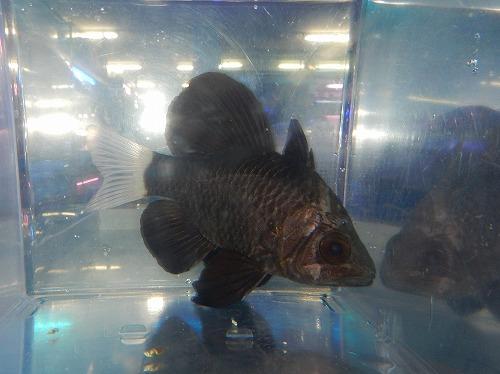
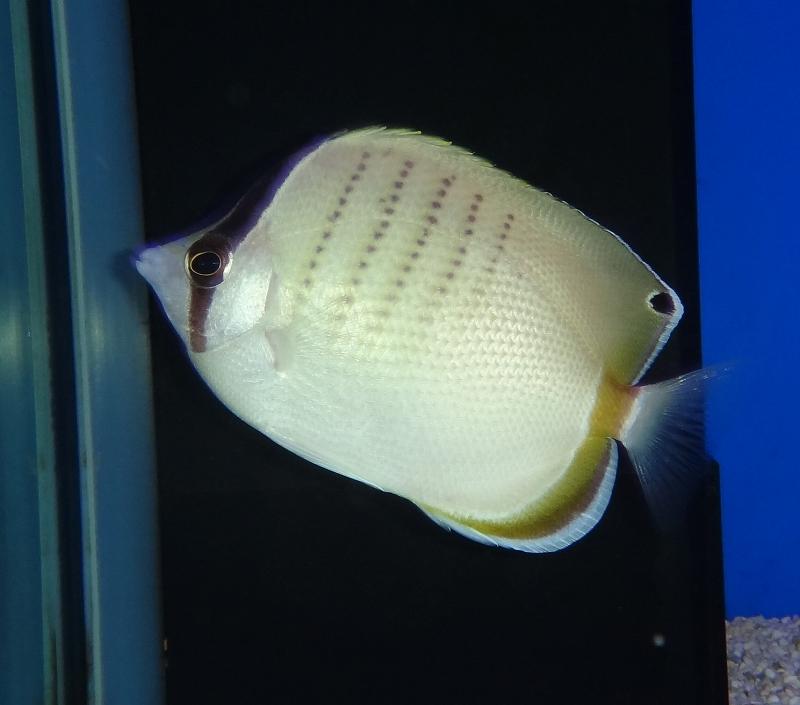
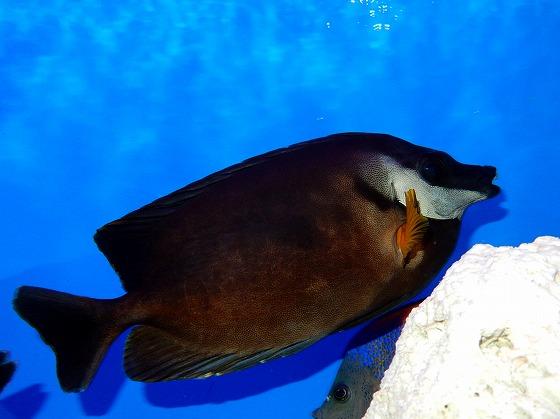
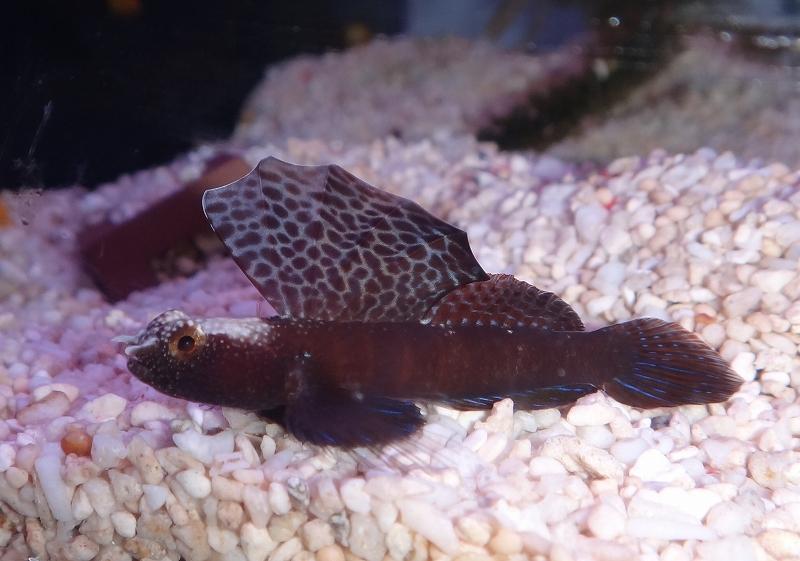
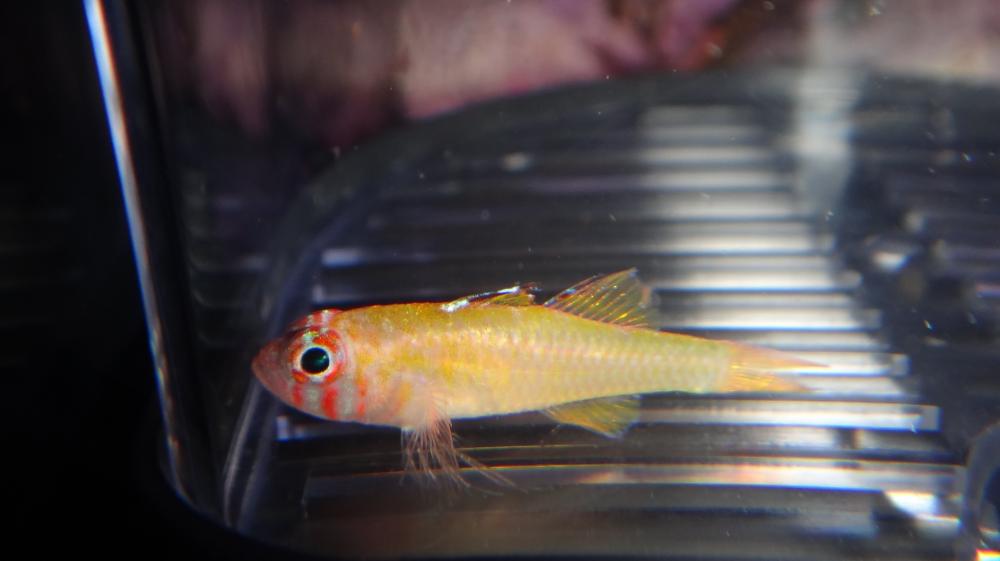
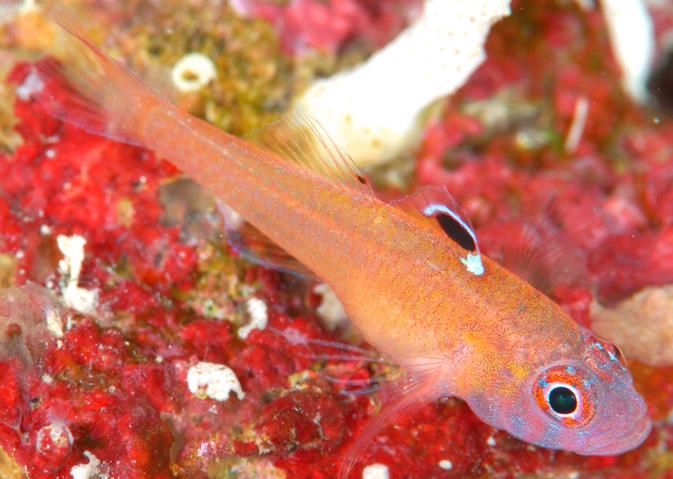

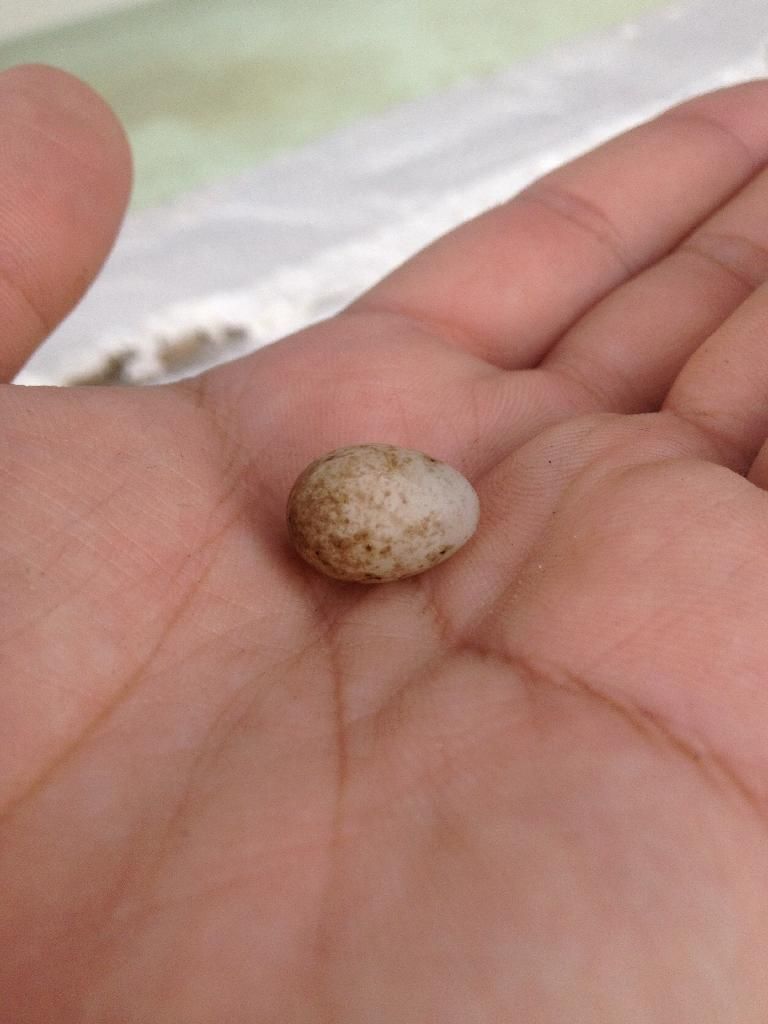
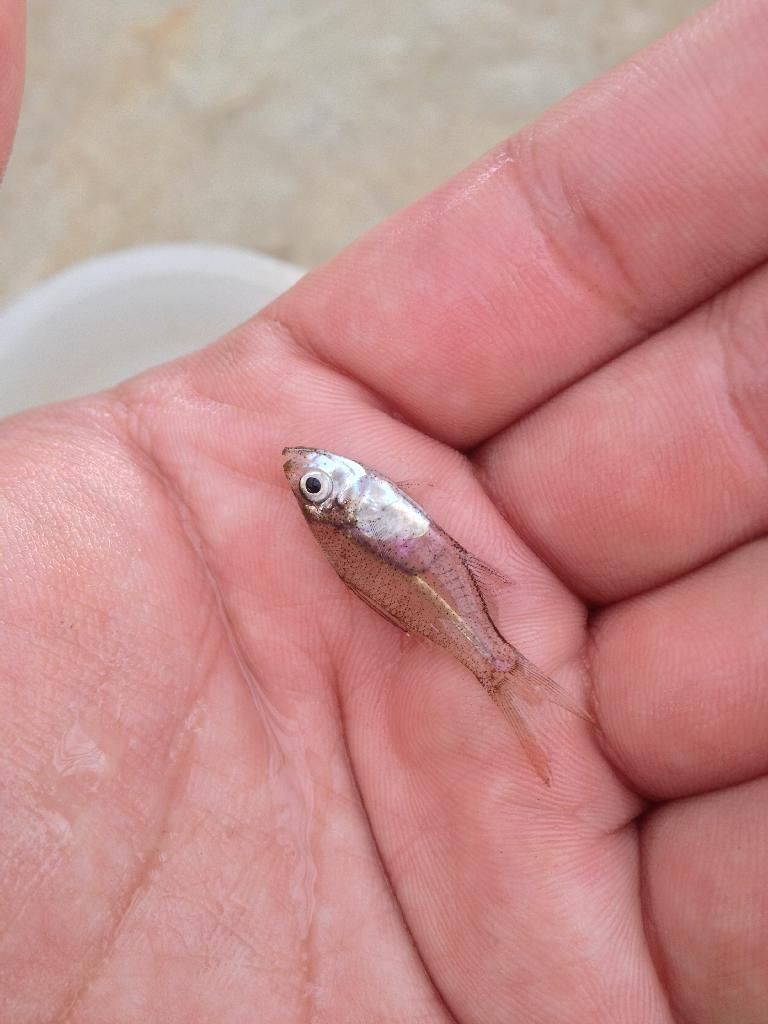

Pls help to id this fish
in New to the Marine Aquaria Hobby
Posted
Pseudochromis fuscus - a dottyback not a wrasse.